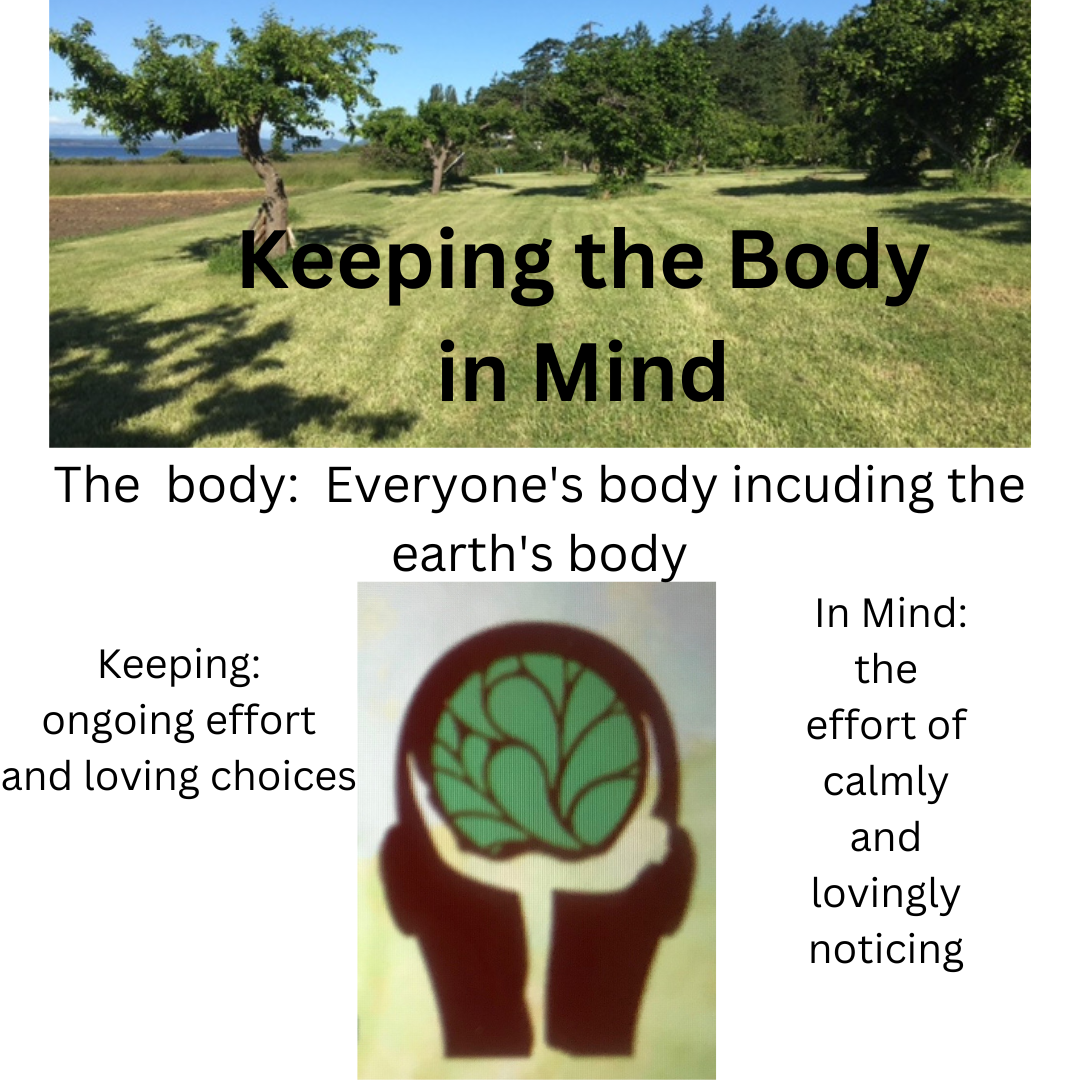|
Words are important to me (always have been) so I want to break down the above concept: How I created it, how I used it and what it means on a deeper level.
The history: Isn’t it curious how words and phrases can lead us through life? How has that worked for you? I coined the phrase ‘Keeping the Body in Mind’ in the early 2000’s before I had recorded my album and written my book. At that time I liked the rhythm of the words and the fact that it addressed body and mind which is what my work has been about for many years. I was a pioneer in bodymind work and having a defining phrase really helped me move forward on an educational front. It sustained me when I was writing the songs for my cd. It became the inspiration and domain name for my first website and workshops I gave. It lead to the phrase in one of my song lyrics on that cd, “Note by Note” that quite a few years later became the title I gave my book. Talk about one thing leading to another! Those two phrases have been behind all my personal healing that has kept my music and writing flowing. The deeper meaning: I use the words, “the body” intentionally because I want to imply something bigger than my body or your body. I want to imply everyone’s body including the earth’s body that we walk on. Using the verb ‘Keeping’ at the beginning of the phrase recognizes that the effort of bringing together body and mind is an ongoing effort. It also means not allowing energy from your bodymind to just disperse or be wasted. As my acupuncturist used to say, “To stay healthy you must ‘keep’ your energy”. What she meant was to think about where my energy was going and make conscious choices, implying that my energy was precious---so many of us need to hear this cue to caring for all parts of ourselves. The phrase “in mind” is tricky because which ‘mind’ am I referring to? Seeing as I have a bit of an obsessive mind I definitely do not want it to be in the part of my mind that says, “You have to be perfect or, Be careful you might make a mistake”. We cannot separate the mind from the body or the brain so I use the words ‘in mind’ in the following way: The medial pre-frontal cortex is the noticing part of the brain and also helps to guide the rest of our brain much like a conductor directs an orchestra. It is the part of the brain that influences the ‘mind’ (all parts of the brain) to have perspective, especially over fear and self-criticalness. I choose this for a definition of ‘in mind’. The graphic above expresses well the feeling of holding and being held. We need this approach to grow a healthy bodymind connection and to do it in a self and ‘other’ loving way that moves us forward. Link to my song ‘Everybody Has the Gift to Heal Themselves’ that conveys the feeling of “Keeping the body in Mind” This was co-written by Debra Alexander and sung by Suzie Vinnick. You can also buy it on itunes https://drive.google.com/file/d/1oU0MmEEPQClpW8gTQPNeDIyDfM6-Oo_8/view?usp=share_link
0 Comments
Leave a Reply. |
AuthorKristi Magraw is known for having developed a unique synthesis of Eastern healing (Five Element theory) and Western ways of working with the mind, called the Magraw Method, which she established in 1979. This method uses metaphoric language and release techniques to help people heal physical and emotional pain. Archives
September 2023
Categories |

 RSS Feed
RSS Feed
